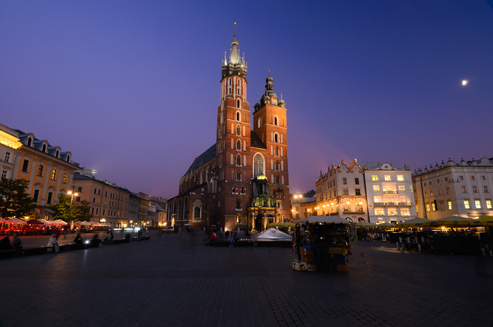The effects of this archeological research are presented at the underground exhibition, which aims to demonstrate connections between medieval Cracow and other European cities of that time.
Cracow Main Square is a magical place. It was marked out in the middle of the 13th century and became the town’s main public area. Since then, over the centuries, it has been the heart of Cracow. But to see how this area appeared in the late Middle Ages, when it was visited by Copernicus (Mikolaj Kopernik), one needs to get underground.
The history of the Main Square reaches back much earlier than the Middle Ages. Every student in Poland knows, that in 966 Poland became a Christian nation. Nevertheless, many scientists believe that this date was not so important for Cracow inhabitants, as they had become Christians long before that. Unfortunately, the events of that period are not documented in writing. The only opportunity to discover the numerous secrets of these times is by archeological research. The researchers working on the Square over the last few years managed to resolve some secrets too.
The Underground of the Cracow Main Square will take you for a journey into the past, which has been brought to life by archeologists. It is a sanctuary featuring many construction and architectural relics, as well as stone roads with potholes curved by medieval carts transporting trade goods, when Wladyslaw Lokietek was on the throne. There is also the oldest stone trade building in Cracow, ornaments, coins and many other items lost or left there on purpose by people visiting the town in the past. At the same time it is a place, where the atmosphere is created by the modern technology offering visitors a new way of studying history and relics of the past.
If you have not had a chance to visit the Cracow Underground Museum, you can take a 3D tour at Wirtualne Spacery
Source: Podziemia Rynku
Photo © Francesco Carovillano


